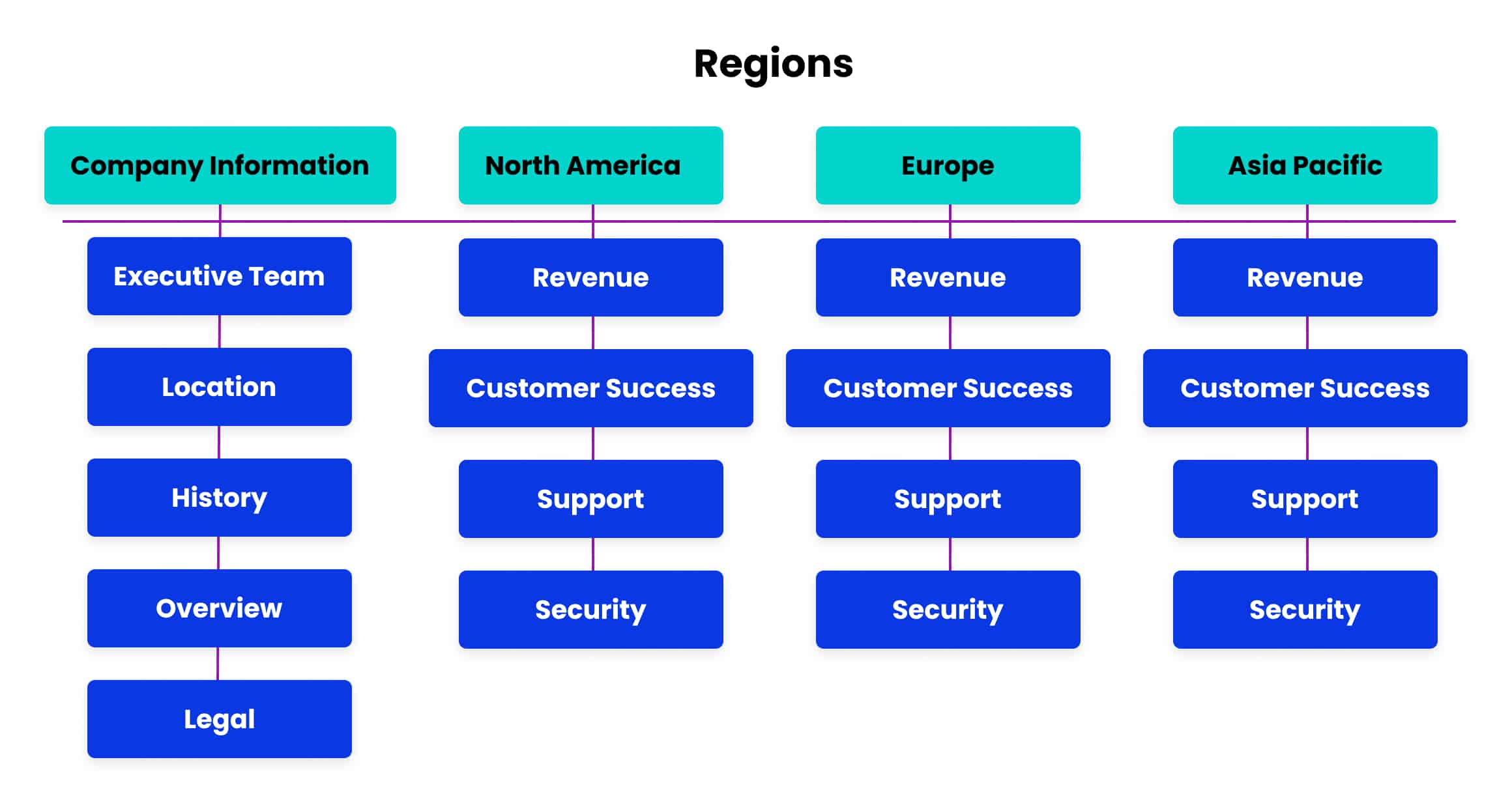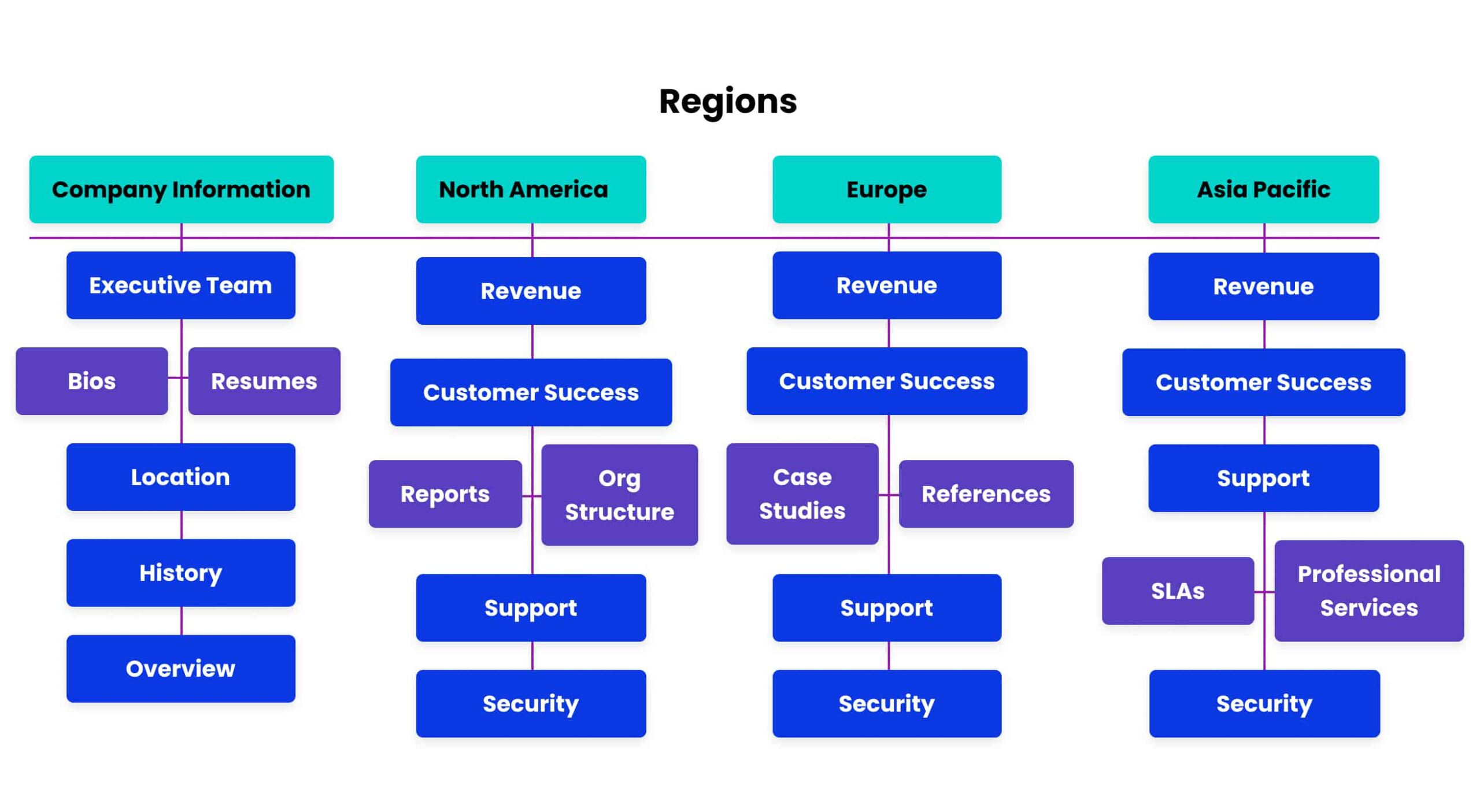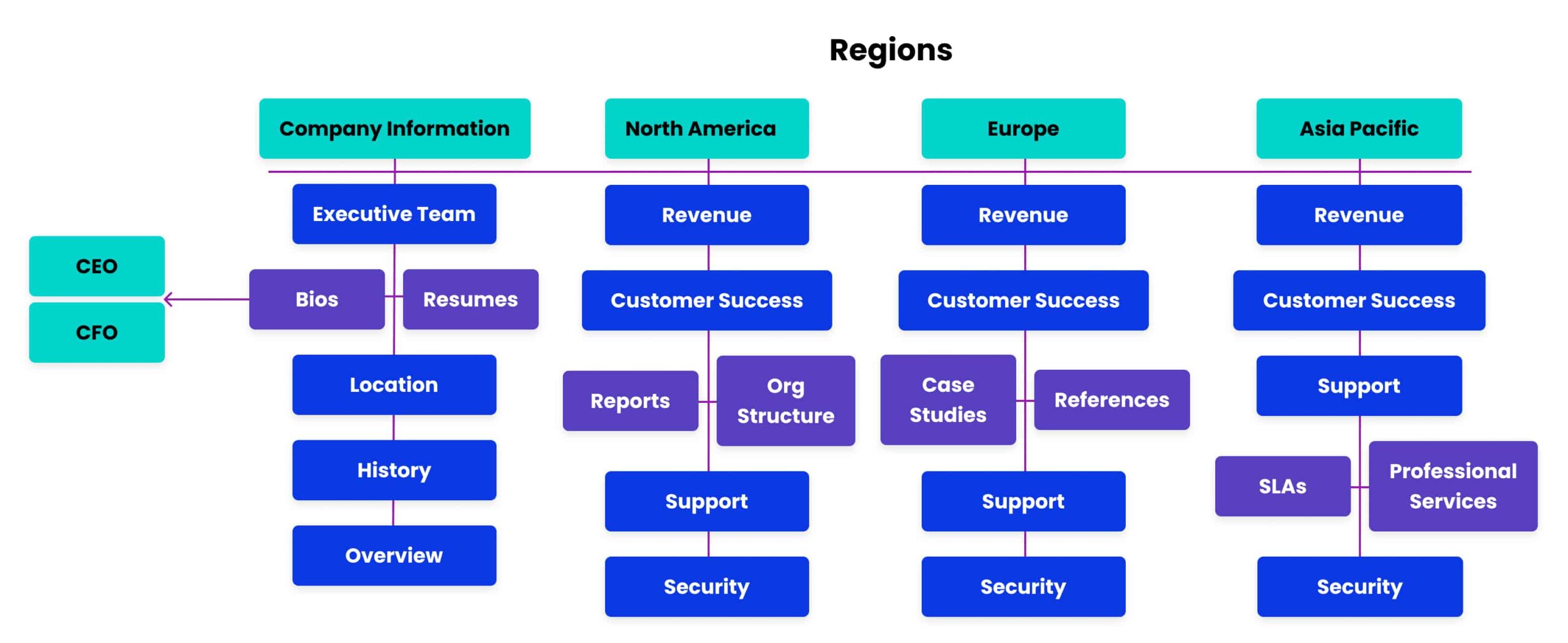When you explore your sales content library, how do you feel? Does it spark joy like a neat and tidy home that’s received the Marie Kondo treatment? Or do you want to pull your hair out?
If the latter sounds familiar, it’s possible that your library contains inaccurate or out-of-date answers, which can make finding information a timely and frustrating process.
In this article, you’ll get insightful tips that take your content library from chaos to clarity—helping you win more RFPs while minimizing headaches.
Read on to learn how to build an organized content library.
Content Conundrum? Why Mastering Your RFP Library is Critical
Having quality content is essential for winning RFPs. But most teams face two main challenges on the path to proposal success (as highlighted in Loopio’s 2023 RFP Trends Report):
- Collaborating with subject matter experts (SMEs)
- Making sure content is easy to find, accurate, and up-to-date
While these seem like two independent challenges, they often go hand in hand––leading to frustrations on both sides…
On one side, proposal and sales teams rely on SMEs to share their knowledge and provide accurate answers that showcase why a solution is the best. From a SMEs’ perspective, participating in RFPs can become a burden when they are constantly bombarded to revalidate information. All of this slows down your sales cycle.
While a proposal content library can help solve these challenges, it can quickly become cumbersome if you don’t know how to efficiently manage your evergreen RFP answers.
So, what’s the secret?
Start by addressing challenge #2. By building a well-structured content library of both internal and external documents, you can find the correct answers quickly and banish any doubts, like “is this response from June or January?”
Once you have a solid foundation, the rest will fall into place. You’ll be able to engage SMEs earlier in the process to simply update RFP answers (instead of starting from scratch), giving you more time to focus on tailoring your proposals to procurement’s liking.
Follow the 5-Step Filing System for Creating a Well-Structured Content Library
Building your content library structure can feel daunting, but the pieces fall together seamlessly with filing best practices. After choosing where to store your content (like in an RFP library management system), you can start sorting it by following these steps.
Step 1: Identify Your Library Rooms (a.k.a Stacks)
Once you’ve got your library location, the first step is establishing a way to categorize your content on the broadest level. These will be the individual “rooms” in your content library.
Each of these rooms should cover a wide range of information. Think big—your rooms should be distinct and few in number so that you can start to give structure to your repository.
For example, if your organization supports a global range, you might create rooms based on the regions you serve, like North America, Europe, and Asia Pacific (APAC). Just remember to keep one room for general company information.

Other ways you could break up your rooms include:
✓ Subsidiary companies under one parent company
✓ Business units, such as operations, marketing/sales, and legal (for example, you could have a marketing content library and sales one for sales content management)
✓ Your different products and services
🚪Room tip: Like physical rooms, you can keep the doors locked by giving each its own sharing permission so only certain people can access the content inside.
Step 2: Pick Your Category Filing Cabinets
Within your rooms, create filing cabinets to group content into distinct topics. It goes without saying—each filing cabinet should relate directly to the room it’s in.
You want to have at least 5-10 cabinets per room. If you don’t meet the minimum, ask yourself whether that room is necessary or you can combine it with another.
Using the example above, you could add these filing cabinets.

Other common filing cabinet categories include case studies, risk management, partnerships, legal counsel, security, and customer success—but the sky’s the limit. Just make sure that the names you give each filing cabinet are clear and recognizable (avoid jargon and acronyms) so that anyone on your sales team can easily find information.
🗄️ Filing cabinet tip: Assign an SME to each filing cabinet so that you can streamline the data collection process even more. For example, if you have a security information file cabinet in each room, you could assign experts from your data security team. Or, if you have a file cabinet for sales assets, you might tap a sales and marketing team member to get involved.
Step 3: Organize With Specific File Folders
If your company has an extensive library with complex topics, you can divide your files into more specific categories. This will make it even easier to find content as you need it.
Not every organization will need this level of categorization for internal assets. Likewise, some libraries may need file dividers for particular files but not others, so it all depends on how full your cabinets are.
If we go back to the regional example, in the Executive Team filing cabinet, you could categorize even further with a file dividers for bios and resumes.

🗃️File divider tip: File dividers work best when used sparingly. If you have dozens of dividers in one filing cabinet, they can blur together, making it difficult to find specific content.
Step 4: File Your Content (a.k.a. RFP Answers)
The next step is filing each answer in the right location. This sales content can be in question/answer format or general topics you frequently get asked about in RFPs.
As you can see, the CEO’s and CFO’s bios would each be their own “piece of paper.”

While you may have versions of the same answer for multiple rooms, avoid this as much as possible by tailoring answers to the relevant customer type. Your content should be distinct because duplicates can confuse teams when identifying which answer they should use.
With that in mind, you may probably also have some boilerplate or generic answers that don’t often change. We suggest storing these in the Company Information room for easy finding.
📂 File tip: Leverage multimedia storage. To keep your library organized, store all images, text, attachments, and other information you’ll need to support responses within the answer itself.
Step 5: Add Labels for Clarity (a.k.a. Tags)
Labels add a layer of filtering to your content library. They aren’t specific to one room, file cabinet, file divider, or paper. Instead, they allow you to sort content across the whole system.
For example, you could add labels for different industries under each region.
But there are many other ways you can use labels. Here are some possibilities:
✓ How to use specific pieces of content, such as for RFIs, RFPs, or RFQs
✓ Break up different customer profile sizes, SMB, Mid-Market, or Enterprise
✓ Assign content ownership to a department as a whole, like HR
🗂️ Label tip: Labels work best when you have a strong library structure that’s well-organized, so implement a system like the one we’ve outlined in this article before assigning labels. They’re for adding an extra layer of filtering, not carrying the weight of your library.
Stay On Top of Keeping Your Sales Content Library Up to Date
Given the ever-evolving nature of most companies and industries, it’s essential to keep your content library up-to-date with the latest trends, relevant information, and market insights to ensure your proposals are always competitive and compelling.
While you may diligently build a wealth of knowledge over time, the challenge lies in consistently maintaining and updating it. But don’t overlook this step because neglecting your library can result in antiquated, inaccurate answers—and missed opportunities.
To keep your content library up-to-date, focus on these core pillars:
Reuse Winning Content
Are there particular answers that have helped you win bids? If so, that’s the gold standard of content that should be in your library to help you submit a quality response, that you know had a solid chance at winning. As you continue submitting and winning proposals, identify the most effective answers, sort them in your library, and reuse them.
Avoid Duplicate Answers
Duplicate answers are a recipe for confusion amongst your team and slow down your sales process—precisely what we want to avoid. The more duplicates there are, the more difficult it is to know which ones are accurate and which ones are outdated.
If you want to reduce the content in your library, removing duplicates is the best place to start. Begin by combining content where there are two responses to the same question. If questions are being asked in slightly different ways, you should also connect them to the same response.
Protect Content Accuracy
As time passes, stats and figures may shift, or the details of your offerings may change. If your team gets the sense the library isn’t up to date, they’ll be less likely to use it. Plus, providing accurate answers will help you live up to your customer’s expectations when you win.
Keep on top of accuracy by establishing a feedback loop, building in consistent reviews from SMEs, and properly labeling evergreen content that won’t change.
4 Steps to Maintaining an Ever-Evolving Sales Content Library 📚
- Establish roles for who can curate, add, and update content (e.g. SMEs) and who needs read-only access (e.g. sales representatives).
- Schedule a regular review process (monthly or quarterly) to update RFP answers and weed out duplicates or unused content.
- Comb through sales call recordings for inspiration to give your answers a winning edge for every new RFP that rolls in.
- Ask your team to submit FAQs regularly and upvote the best responses
An Organized Content Library Spells Success
Just remember these key points for building your content library:
✓ Choose a location that’s easy to use, search, and sort
✓ Create a robust and organized structure
✓ Identify the highest quality content and sort accordingly
✓ Set up regular review processes and keep it maintained
How to Manage Your Content Library with Loopio
Proposal teams, sales enablement, reps, and other SMEs across your business must collaborate on content for RFP responses in order to put forward a response that truly stands apart from all others, and ultimately wins the deal.
But to say there can be “challenges” in this process is an understatement. 😅 And while setting up a sales content library is key, it can also become a dumping ground for information (and become outdated), if a team is not actively managing that library.
That’s where Loopio’s content library is different. Our library is not just a repository for past responses. It offers an intelligent database of information that you’ll can use for future RFPs. With AI in Loopio, our library takes on next-level usefulness, with features like:
- Intelligent import: Get started quickly with Loopio’s easy document uploading process that uses machine learning to categorize information within the source document.
- Magic Response Automation: Generate an entire first draft RFP response from previously answered questions in seconds.
- Content Recommendations: Strengthen response entries with AI suggestions based on qualities seen in top-performing RFPs.
- Duplicate Detection: Keep answers tidy through a library that uses machine learning to detect duplicate entries automatically.
- Generate Answers: Generate an answer to any question using your trusted library with a single click.
- Recommended Experts: Using machine learning, the right subject matter expert is recommended based on previous responses.
Want to learn how our library works? Check out the video below on building & maintaining your library in Loopio (or request a demo).

Design Ideal Your Content Library Structure
Download this template to learn how to organize your best content so that you can respond to RFPs faster, with winning answers.
